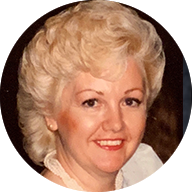Our mother, Carol, passed away on November 9, 2018, the day before her 77th birthday, from multi-organ failure, due to a very toxic antiarrhythmic drug that never should have been prescribed to her.
After her passing, my father and I requested her medical records from 2005-2018; which represented the 13 year timeframe her cardiologist kept her on the toxic drug. It was our goal to find out where the breakdown in her medical care occurred. Over the course of four months of reviewing 1,800 pages of documents from the same hospital and clinic system, it became evident to our family what happened. It is now our goal to inform others of her story.
In February 2005, Carol was diagnosed with new on-set paroxysmal atrial fibrillation. The first drug, Sotalol, did not agree with her, so the cardiologist team switched her to Pacerone; which is also referred to as Amiodarone or Cordardone. In 1985, the FDA approved the use of Pacerone (Amiodarone) for life-threatening, recurrent ventricular tachycardia and ventricular fibrillation, not for mild to moderate paroxysmal atrial fibrillation, due to the toxic, dangerous side effects of the drug. Before 2005, she had a known allergy to iodine, and this was listed in all of her medical records. Yet, her doctors ignored or never took notice that iodine is 37% the molecular weight of the drug, and Carol was allergic to it. In March 2015, and maybe her doctors were concerned about liability, removed iodine/iodides from her list of allergens. At this point, she had been taking Pacerone (Amiodarone) for 10 years.
Our mother had numerous side effects over the 13 years while on Pacerone, which added to her list of doctors, added to her list of diagnostic procedures, and added to her list of prescribed medications, while compounding her symptoms due to interactions. It is difficult to cover all of what she went through, yet it is important to know some of her experiences to understand the side effects of this dangerous drug, and what the doctors could have done differently to save her life.
In July 2010, a CT Urogram found increased liver attenuation at 95. The normal range is Hounsfield Unit 55-65. Here was an opportunity for the urologist to investigate what was causing damage to her liver. Instead, he neglected to share this discovery with the patient and other members of her treatment team. All follow-up office notes mention simple renal cysts, and the increase in liver attenuation was omitted.
In 2008, our mother’s hands began to mildly shake. By 2010, her head also developed a tremor. Her hands shook so severely in 2018, that we purchased adaptive utensils with a rubber grip so she could feed herself. In the pharmaceutical company Upsher-Smith Laboratories’ 26 pages of information on Pacerone, tremors are a side effect of the drug and referred to as Parkinsonian symptoms. In October 2018, her cardiologist referred her to a neurologist to test for Parkinson’s disease, and a brain MRI was completed. The doctor prescribed Primidone (Mysoline), a seizure medication, before he had the MRI results. No patient with kidney disease should be prescribed this drug, and Carol had Stage 3 Kidney Disease. The neurologist was negligent in not reviewing her past and current lab work which would have verified her kidney and liver damage. Four days before Carol passed away, and after days of IV fluid in the Intensive Care Unit, the toxicity of the medications began to lessen, and her hands were calm.
Her thyroid function (TSH) was tested from 2005-2011 by her primary physician, and after 2012, her cardiologist began testing it annually knowing that Pacerone could cause hypothyroidism. In May 2011, with this new diagnosis, her cardiologist did not stop Pacerone, nor was thyroid medication prescribed.
As Carol became older and her liver and kidneys had a harder time filtering the side effects of her medications, the doctors’ office notes became briefer and showed less involvement in her care. Her cardiologist and her primary physician were referred to as her Care Team; yet, both doctors created anxiety for the unhealthy, cardiac patient due to their inability to consult with one another about the best course for her care. Her primary physician noted Carol’s anxiety about her health, and anti-anxiety medication or sometimes pain medication was ordered to placate the patient.
The lab work reviewed in July 2017 stands out as the month when the dysfunction of her Care Team is most baffling. The cardiologist ordered lab work to check her kidney function, liver function, cholesterol levels and thyroid function. Cholesterol levels came back normal. Kidneys: Stage 3 Kidney Disease; Liver: Abnormal; and elevated thyroid. The next office visit on October 11, 2017, makes no reference to reviewing the labs ordered in July. Also, on July 20th, 10 days after her abnormal lab results, Carol sees her primary physician for a Medicare Wellness visit. There is no mention of the doctor reviewing past lab work to determine the need for new follow-up lab work.
In the summer of 2018, Carol had a cough that would not go away and she became progressively more unsteady on her feet. A chest x-ray discovered pleural effusion. At this point, the heart was stable; yet no further tests were done to determine why fluid continued to build up around the right lung.
On October 24, 2018, our mother saw her cardiologist for a follow-up office visit. She had lost 17 pounds in three weeks from lack of appetite and her gait had changed. On this date, our father asked the doctor to stop the Pacerone because of her hypothyroidism. The doctor agreed and then put her on the thyroid medication Levothyroxine. This was the first thyroid medication ever prescribed to her. The doctor should have admitted her into the hospital on this day with a blood pressure of 104/50, pulse of 52, and weight loss. Instead he sent her home. The following day our father took her to the Emergency Room where she was admitted into the hospital. ER ordered tests and discovered portal vein occlusion. The portal vein brings blood to the liver from the intestines, but it was blocked. In addition, her CT (non-contrast) test found non-alcoholic hepatic cirrhosis, due to the occlusion, plus moderate ascites from the fluid buildup in her abdomen, which explained her lack of appetite.
During her hospitalization, our father and her four children, made sure that one of us stayed with her round-the-clock. Our mother was confused and agitated on one of the evenings I slept overnight with her. She tried to pull herself over to one side of the bed to use the bedside commode. To my horror, the bed’s guard rail was down, and I reassured her that she had a urinary catheter. I pushed the call button for help, and no one came until I called out loud for help. The next day our nurse sister arrived from out-of-town and asked the ICU nurse what Carol’s ammonia level was since she had a hard time answering questions and sipping water from a cup? The nurse said it had not been tested. She had a severe urinary tract infection, and the ammonia test should have been normal protocol. With medication, the elevated ammonia level went down and our mother was able to have short, memorable conversations with us, along with eating food and drinking liquids.
Her liver continued to deteriorate, and then the kidneys and then her heart. Her last few days were spent in Comfort Care surrounded by her family.
Pacerone has a half-life after stopping the drug. It can stay active for up to 58 days in the body. If this drug is stopped and another anti-arrhythmia drug is prescribed, it is equivalent to taking two drugs, along with all its side effects. On the seventh day of our mother’s hospitalization, we requested from the cardiologist a Pacerone (Amiodarone) toxicity test. We wished we had requested this test on the day she entered the ER. Due to two weeks of IV fluids, the Amiodarone and Desethylamiodarone levels noted the drug still in her system, but at the lower range. The hospital sent her blood to a laboratory in Ohio. Carol was the first patient the ICU nurse ever remembered being checked for Pacerone (Amiodarone) toxicity. It was a test our mother’s oldest granddaughter discovered through the FDA website.
When our mother passed away on Friday, November 9, 2018, the funeral home had to follow up with the hospital on November 23 because they had not received the death certificate from them. The funeral home finally signed it on November 26. From our prospective, this delay from the hospital in filling out the death certificate was a red flag. Sure enough! What the hospital neglected to include on the death certificate were portal vein occlusion and liver failure.
We have learned as a family that requesting our medical records and reviewing them is crucial to getting answers to unanswered questions. Know the side effects of medications and its interactions with other medications to avoid undergoing unnecessary tests. Some doctors will prescribe additional tests and procedures that look good on paper, and that is all it is, it’s on their computer, it’s on our mother’s medical records… it’s called defensive medicine to protect against being sued. We feel defensive medicine was also evident in the cardiologist’s passiveness in allowing our mother to suffer through 13 years of taking Pacerone until our father requested it to be stopped.
Also, a family member or friend should accompany the patient to an office visit to take notes or ask questions. Our mother’s elevated ammonia level, from a urinary tract infection, is a good example of how it clouds a person’s ability to understand and retain information from their doctor.
In the State of Wisconsin, a spouse or child of a parent under the age of 18 can sue for medical malpractice caused within three years from the date of death. It means all our mother’s documentation from 2005 to 2015 would not be allowed in as evidence, only 2016 to 2018. The cards are stacked up against the patient’s family with a case that can last from 2-3 years.







